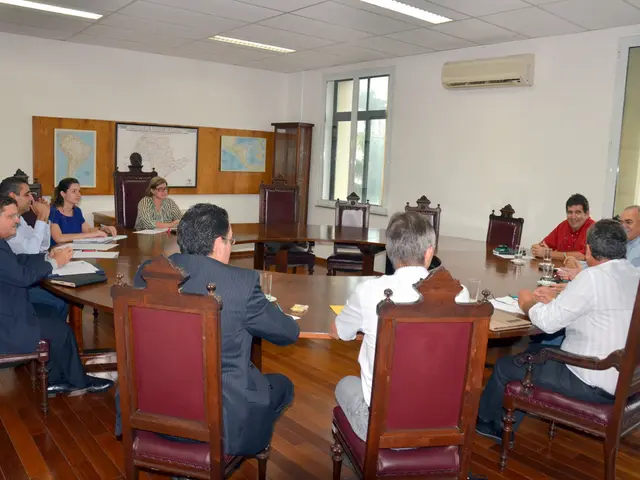Restructuring Climate Initiatives: Shifting Focus from Crisis Mitigation to Strengthening Resilience
In the realm of climate action, it's high time we shifted gears from limiting harm to building resilience. For decades, our strategies revolved around mitigating risks, conforming to the logic of protecting ourselves from potential disasters. However, the current climate, geopolitical, health, and economic crises have made it evident that risk management, alone, is insufficient.
We now stand at a crossroads where resilience must take center stage. This isn't just a soft add-on, but a crucial strategy for maintaining stability and prosperity. Community-led, locally-driven adaptation has proven more effective and sustainable, rooted in the unique knowledge of the communities themselves. Yet, these initiatives remain underfunded and overshadowed by conventional finance models.
The risk-based approach has dominated climate finance, with financial actors focusing on quantifying, pricing, and managing risk. From microinsurance pilots to sovereign catastrophe bonds, risk became the defining language of climate action. Yet, as we grapple with cascading climate, health, and economic shocks, managing risk is no longer enough.
Local communities, often hit hardest by climate impacts, are too frequently overlooked by private and commercial capital. Financial norms emphasizing scalability, formal structures, and returns filter out many high-impact, locally-led solutions. Even when these initiatives are funded, they are often forced into mitigation-style models that overlook their broader public benefits.
Investments in resilience, from disaster preparedness to ecosystem restoration, receive no recognition in financial ratings or capital markets. As we ask "What could go wrong?" we must also question "What must go right for people to thrive?"
The resilience approach views vulnerable communities as active protagonists, designing, implementing, and scaling solutions that fit their unique contexts. We need to transition from viewing them as passive recipients of aid to recognizing their potential as active solution-providers.
To truly transform climate action, we need new financing mechanisms designed for vulnerable contexts. These should be capable of identifying, funding, and scaling locally-led initiatives that are already proving successful.
Consider Coast 4C in the Philippines, a program that empowers seaweed farmers to increase yields while restoring degraded marine ecosystems. Supporting over 5,800 hectares of coastline, cutting carbon emissions, and improving the livelihoods of nearly 9,000 people (82% of whom are women), Coast 4C exemplifies the power of local, commercially viable, socially inclusive solutions.
Yet, bridging the gap between innovative initiatives and available capital requires more than new metrics and tools. It necessitates a mindset shift, prioritizing resilience over risk.
According to recent research, each dollar invested in resilience can generate over $10 in benefits, from avoided losses to increased productivity and social stability. Investing in locally led adaptation delivers what experts call 'triple dividends': reduced climate risk, economic returns, and broader development gains.
In conclusion, adapting financing models to prioritize and scale climate resilience solutions demands embracing a range of approaches, including blended finance, public-private partnerships, innovative financing mechanisms, and capacity-building for local actors. By understanding and engaging with the challenges faced by communities, we can unlock capital flows where they have the most significant social and environmental impact, bridging the wide funding gap in the process.
- To address the ongoing climate change more effectively, we should prioritize and invest in the Earthshot Prize’s approach of building climate resilience, as opposed to solely focusing on risk management.
- The Mastercard Center for Inclusive Growth and Systemiq's emphasis on the triple dividend of resilience—reduced climate risk, economic returns, and broader development gains— demonstrates the importance of climate resilience in environmental science, finance, and personal-growth perspectives.
- Currently, environmental-science research and personal-finance measures focusing on climate-change mitigation overlook the potential of locally led climate solutions, which are critical for climate adaptation and adaptation finance in vulnerable communities.
- Science-backed findings indicate that investing in climate resilience could generate over ten times the benefits in areas like disaster preparedness, climate risk management, and ecosystem restoration, suggesting a need for more efficient wealth-management strategies that prioritize environmental seeking-development.
- Learning about the success of programs like Coast 4C in the Philippines, which combines economic viability and local participation in climate resilience initiatives, can inform the design of new educational-and-self-development courses in investment and wealth-management, promoting personal growth as well as planetary growth.





